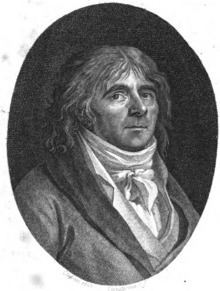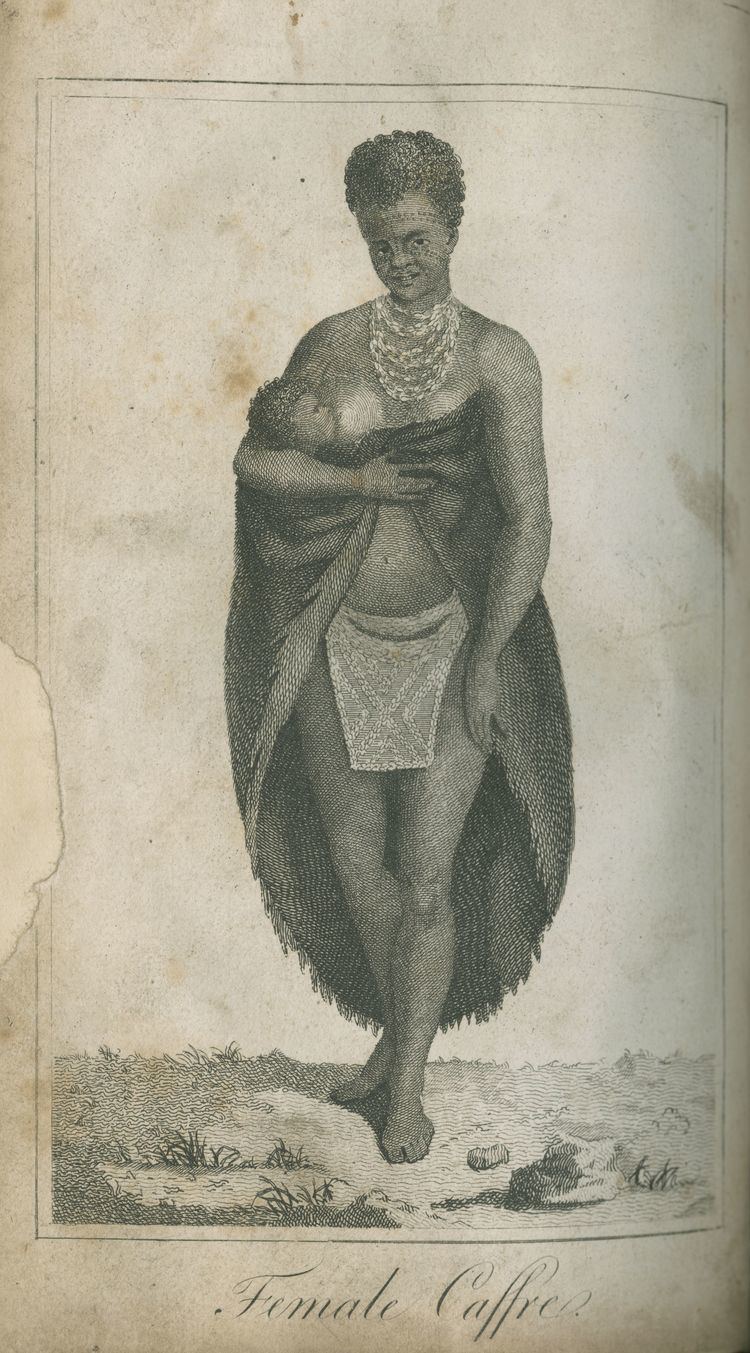Name Francois Levaillant | Role Author | |
 | ||
Books Travels from the Cape of Good-Hope Into the Interior Parts of Africa: Including Many Interesting Anecdotes. With Elegant Plates, Descriptive of the Country and Inhabitants ... | ||
François Levaillant (later in life as Le Vaillant, "The Valiant") (6 August 1753 – 22 November 1824) was a French author, explorer, naturalist, zoological collector, and noted ornithologist. He described many new species of birds based on collection he made in Africa and several birds are named after him. He was among the first to use colour plates for illustrating birds and opposed the use of binomial nomenclature introduced by Linnaeus, preferring instead to use descriptive French names such as the bateleur (meaning "tight-rope walker") for the distinctive African eagle.
Contents
Life

François Le Vaillant was born in Paramaribo, the capital of Dutch Guiana (Surinam), the son of a wealthy French merchant from Metz who had taken up a position as the French Consul. Growing up amid forests, he took an interest in the local fauna, shooting birds. When his father returned to Europe, in 1763, he studied natural history at Metz. He spent about two years in Germany and seven years in the Lorraine region. In 1777, a visit to Paris allowed him to examine cabinets of natural history and his interest in ornithology was greatly increased.
Cape travels

He was sent by Jacob Temminck through the Dutch East India Company to the Cape Province of South Africa in 1780, and collected specimens there until July 1784 when he made his way back to Holland. He made three journeys, one around Cape Town and Saldanha Bay (April to August 1781), one eastwards from the Cape (December 1781 to c. October 1782) and the third north of the Orange River and into Great Namaqualand (June 1783 to c. May 1784). Researchers have to some extent adjusted the dates supplied by Levaillant. During the first expedition his ship was attacked and sunk by the English leaving him with little more than a collecting gun and some money.
Return to Europe

On his return he published Voyage dans l'intérieur de l'Afrique (1790, 2 vols.), and Second voyage dans l'intérieur de l'Afrique (1796, 3 vols.), both of which were translated into several languages. He also published Histoire naturelle des oiseaux d'Afrique (1796–1808, 6 vols.) with drawings by Jacques Barraband, Histoire naturelle des oiseaux de paradis (1801–06), Histoire naturelle des cotingas et des todiers (1804) and Histoire naturelle des calaos (1804). Levaillant’s illustrations often influenced scientific names given by, among others, Vieillot, Stephens and Wilkes.

He was in Paris during the time of the French Revolution and was taken prisoner in 1793. He was however released after the overthrow of Robespierre after which he retired to an estate at La Noue, near Sézanne. Le Vaillant died in poverty in La Noue, near Sézanne (Marne). Le Vaillant married thrice. He had ten children three of whom were illegitimate. He was a grand uncle of the French poet Charles Baudelaire.
Specimens

Over 2,000 bird skins were sent to Jacob Temminck, who had financed the expedition, and these were later studied by his son Coenraad Jacob Temminck and included in the collection of the museum at Leiden. Other specimens were kept in the cabinet of Joan Raye, heer van Breukelerwaert. This collection was bought by the Rijksmuseum van Natuurlijke Historie in the late 1820s, which is now the Naturalis in Leiden.
Traveller and ethnographer
As a traveller in Africa, Le Vaillant tended to describe the African people without prejudice. He shared Rousseau's idea of the "Noble savage" and condemnation of civilization. He described the beauty of Narina, a name that he used for a Khoekhoe woman in Gonaqua, after a flower, a somewhat unusual relationship that would become less socially acceptable in the later colonial period. He was infatuated with Narina, and she stopped painting her body with ochre and charcoal and lived with Le Vaillant for many days. When he left, he gave her many presents but she was said to have sunk into deep melancholia. He named the Narina trogon after her. She was a precursor to Sarah Baartman the Hottentot venus. He also perceived Dutch settlers in a negative way. A brave experimenter, he allowed a Hottentot medicine man to diagnose him when he fell ill and wrote of the successful treatment and cure. By travelling around southern Africa, observing the wild and reflecting upon himself and mankind, it has been claimed that Le Vaillant was the pioneer of a genre of travel writing while also inventing the idea of a wildlife "safari" although he did not use that word of Arabian origin.
Ornithology
Le Vaillant was opposed to the systematic nomenclature introduced by Carl Linnaeus and only gave French names to the species that he discovered. Some of these are still in use as common names, such as bateleur, the French word for tightrope walker, for the way the bird moves its wing. Other naturalists were left to assign binomial names to his new discoveries, some of these commemorate his name:
Le Vaillant was among the first to consider the use of coloured plates of birds in his descriptions. He mounted his bird specimens, preserved with arsenic soap, in lifelike positions and the illustrators showed them in near realistic poses. He ensured that the fiscal shrike was shown along with an insect impaled on thorn. His descriptions of bird behaviour were also considered to be pioneering. He used the name bateleur, French for tight-rope walker, for the distinctive African eagle Terathopius ecaudatus and the distinctive movements of the wing that the bird makes in the air are said to be much like the adjustment that a tight-rope walker would make with a balancing pole. He called the African fish eagle Vocifer for its distinctive and loud yelping calls made while throwing back its head. He was also the first to use musical annotation to describe bird song. A very careful observer of behaviour, he was among the first to notice that the rosy-faced lovebird (Agapornis roseicollis) nested within the nests of the sociable weaver (Philetairus socius). It has been suggested that he may well have been a major influence in the style and art of John James Audubon.
An analysis of Le Vaillant's collections made by Carl Sundevall in 1857 identified ten birds that could not be assigned definitely to any species, ten that were fabricated from multiple species and fifty species that could not have come from the Cape region as claimed.
Works
in English translation:
